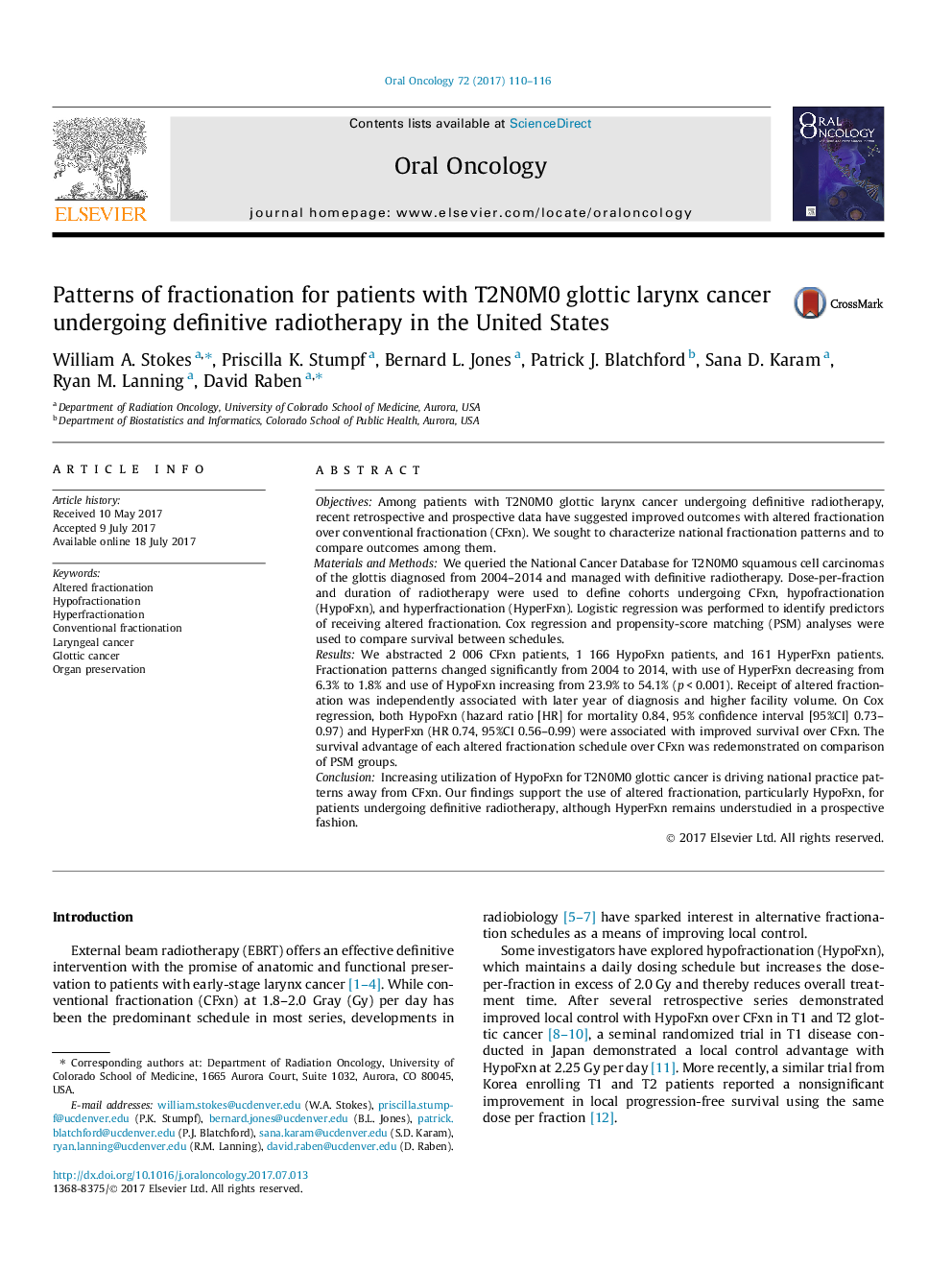| Article ID | Journal | Published Year | Pages | File Type |
|---|---|---|---|---|
| 5642591 | Oral Oncology | 2017 | 7 Pages |
â¢Uptake of hypofractionation is driving practice patterns away from conventional fractionation.â¢However, nearly half of patients continue to receive conventional fractionation as of 2014.â¢Alternative fractionation appears to prolong survival as compared to conventional fractionation.
ObjectivesAmong patients with T2N0M0 glottic larynx cancer undergoing definitive radiotherapy, recent retrospective and prospective data have suggested improved outcomes with altered fractionation over conventional fractionation (CFxn). We sought to characterize national fractionation patterns and to compare outcomes among them.Materials and MethodsWe queried the National Cancer Database for T2N0M0 squamous cell carcinomas of the glottis diagnosed from 2004-2014 and managed with definitive radiotherapy. Dose-per-fraction and duration of radiotherapy were used to define cohorts undergoing CFxn, hypofractionation (HypoFxn), and hyperfractionation (HyperFxn). Logistic regression was performed to identify predictors of receiving altered fractionation. Cox regression and propensity-score matching (PSM) analyses were used to compare survival between schedules.ResultsWe abstracted 2 006 CFxn patients, 1 166 HypoFxn patients, and 161 HyperFxn patients. Fractionation patterns changed significantly from 2004 to 2014, with use of HyperFxn decreasing from 6.3% to 1.8% and use of HypoFxn increasing from 23.9% to 54.1% (p < 0.001). Receipt of altered fractionation was independently associated with later year of diagnosis and higher facility volume. On Cox regression, both HypoFxn (hazard ratio [HR] for mortality 0.84, 95% confidence interval [95%CI] 0.73-0.97) and HyperFxn (HR 0.74, 95%CI 0.56-0.99) were associated with improved survival over CFxn. The survival advantage of each altered fractionation schedule over CFxn was redemonstrated on comparison of PSM groups.ConclusionIncreasing utilization of HypoFxn for T2N0M0 glottic cancer is driving national practice patterns away from CFxn. Our findings support the use of altered fractionation, particularly HypoFxn, for patients undergoing definitive radiotherapy, although HyperFxn remains understudied in a prospective fashion.
